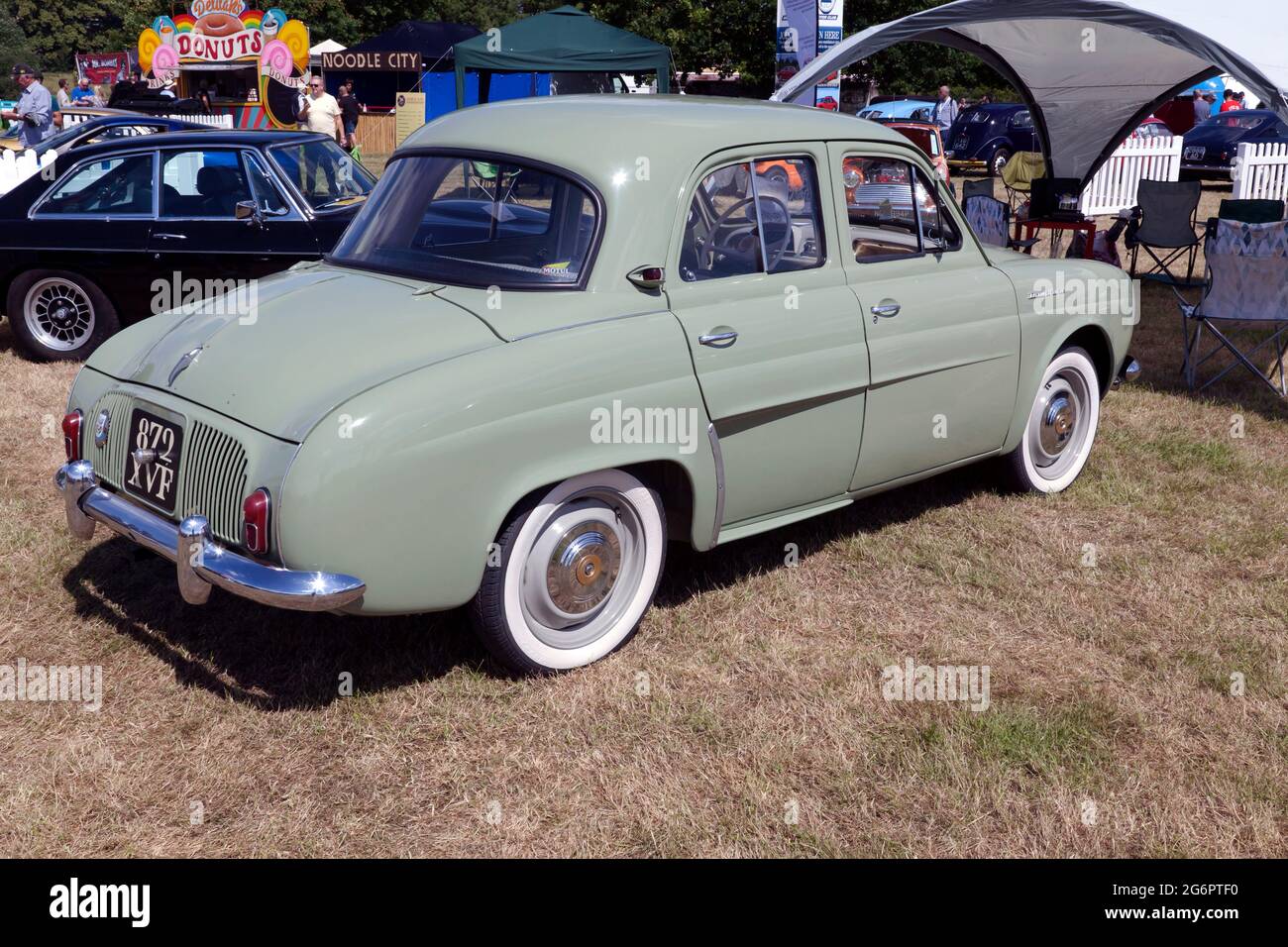Three-quarters rear view of a Green, 1957, Renault Dauphine, on display at the 2021 London Classic Car Show

Image details
Contributor:
John Gaffen / Alamy Stock PhotoImage ID:
2G6PTF0File size:
60.2 MB (3.2 MB Compressed download)Releases:
Model - no | Property - noDo I need a release?Dimensions:
5616 x 3744 px | 47.5 x 31.7 cm | 18.7 x 12.5 inches | 300dpiDate taken:
26 June 2021Location:
Syon Park, Brentford, Middx TW8 8JFMore information:
The Renault Dauphine is a rear-engined economy car manufactured by Renault in a single body style – a three-box, 4-door sedan – as the successor to the Renault 4CV; more than two million were manufactured during its 1956–1967 production. Along with such cars as the Citroën 2CV, Volkswagen Beetle, Morris Minor, Mini and Fiat 600, the Dauphine pioneered the modern European economy car. Renault marketed numerous variants of the Dauphine, including a luxury version, the Renault Ondine, a decontented version as the Dauphine Teimoso (Brazil, 1965), [ sporting versions marketed as the Dauphine Gordini and the Ondine Gordini, the 1093 factory racing model, and the Caravelle/Floride, a Dauphine-based two-door coupé and two-door convertible. Internally known as "Project 109" the Dauphine's engineering began in 1949[12] with engineers Fernand Picard, Robert Barthaud and Jacques Ousset managing the project. A 1951 survey conducted by Renault indicated design parameters of a car with a top speed of 110 km/h (68 mph), seating for four passengers and fuel consumption of less than 7 L/100 km (40 mpg‑imp; 34 mpg‑US). The survey indicated that women held stronger opinions about a car's colors than about the car itself (See below, Marrot at Renault). Engineers spent the next five years developing the Dauphine. Within the first year, designers had created a ⅛th-scale clay model, studied the model's aerodynamics, built a full-scale clay model, studied wood interior mockups of the seating, instrument panel, and steering column – and built the first prototype in metal. Having largely finalized the exterior design, testing of the prototype began at Renault's facilities at Lardy, France – by secrecy of night, on July 24, 1952 Using new laboratories and new specially designed tracks, engineers measured maximum speed, acceleration, braking and fuel consumption as well as handling, heating and ventilation, ride, noise levels and parts durabiliity.